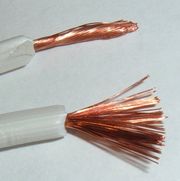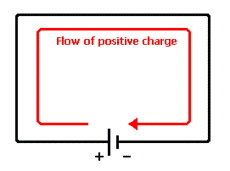IV. Составьте 5 предложений , комбинируя подходящие части, данные в колонках I и II
ОБЩИЕ ВОПРОСЫ ЭЛЕКТРИЧЕСТВА
Практикум
по английскому языку для студентов II курса
Уфа 2010
Составитель : И.В. Ягунина
УДК 811.111.(07)
ББК 81.2Англ(я7)
Английский язык: общие вопросы электричества: Практикум по английскому языку для студентов II курса / Уфимск.гос.авиац.техн.ун-т; Сост.: И.В.Ягунина.- Уфа,2010.- 66 с.
Предназначен для аудиторной и самостоятельной работы студентов II курса специальностей 140205 Электроэнергетические схемы и системы, 140601 Электромеханика, 140609 Электрооборудование летательных аппаратов. Цель практикума – усвоение необходимого терминологического минимума, дальнейшее совершенствование навыков чтения, перевода и аннотирования оригинальной литературы по специальности, а также устного общения на английском языке в пределах общей профессиональной тематики.
Состоит из 10 уроков, построенных на текстах, заимствованных из современной английской и американской литературы по специальности. Тематика текстов разнообразна и охватывает различные технические аспекты. Цель лексических и грамматических упражнений – закрепление материала знаний, развитие навыков устной речи на специальном материале и усвоение необходимого минимума терминов по специальности.
Табл.1. Ил.7. Библиогр.: 6 назв.
Рецензенты : канд.филол.наук, доц.каф.ЯЗКиПЛ Петрова Т.А.,
доц.каф. ТОЭ Грахов П.А.
©Уфимский государственный
авиационный технический университет, 2010
Содержание
Введение ………………………………………………………………4
Lesson 1 Electric current …………………………………………..5
Lesson 2 How magnetism makes current…………………………11
Lesson 3 Electrical circuit………………………………………….17
Lesson 4 Insulators, conductors and semiconductors…………….23
Lesson 5 Electromotive force………………………………………29
Lesson 6 Voltage and Current………………………………….....35
Lesson 7 Electric power transmission…………………………….40
Lesson 8 Electric motors………………………………………….46
Lesson 9 Аircraft electrical systems
and why they operate at 400 Hz frequency…………...……..54
Lesson 10 Maintenance and inflight decision making…………..59
Bibliography ………………………………………………………….65
ВВЕДЕНИЕ
Методические указания к практическим занятиям по английскому языку «Английский язык: общие вопросы электричества: Практикум» предназначены для студентов II курса специальностей «Электрические схемы и системы», «Электромеханика», «Электрика летательных аппаратов». Цель практикума - обеспечить усвоение необходимого терминологического минимума , помочь студентам преодолеть трудности, характерные для технического текста, совершенствовать технику чтения и адекватного перевода литературы по специальности, , а также обогатить , закрепить и систематизировать навыки устного общения по специальности.
Данный практикум состоит из 10 уроков, последовательно связанных между собой тематически, и текстов по специальности для дополнительного чтения. Тексты заимствованы из специальной научной литературы на английском языке и ориентируют студентов на совершенствование навыков технического перевода современной публицистики. Тематика текстов разнообразна и направлена на обогащение словарного запаса, необходимого для чтения технических текстов. Тексты содержат большое количество терминологии, что помогает студентам правильно пользоваться лексикой по специальности. Для достижения осмысленного чтения текста предварительно предлагается проработать тематический словарь, приведенный в начале каждого урока.
Для закрепления навыков перевода технической литературы и устной речи по специальности тексты каждого урока снабжены системой лексических и грамматических упражнений, построенных исключительно на материале приведенного текста. Послетекстовые упражнения направлены на активизацию навыков пользования технической терминологией и ставят целью обеспечение практики устной речи на базе информации, полученной из текстов. Грамматические упражнения создают условия для повторения, использования и закрепления грамматических конструкций при чтении и в устной речи по технической тематике.
В практикуме представлены тексты для внеаудиторного чтения.
Lesson 1
Electric current
I. Прочитайте и запомните следующие слова и словосочетания
| electric charge | электрический заряд |
| ammeter | амперметр – прибор для измерения силы тока |
| conductive metal | проводящий металл |
| randomly | Случайно |
| to propagate | распространять(ся) |
| velocity | 1) скорость ; 2) быстродействие |
| property | 1) свойство, характеристика, характерная особенность; 2) способность |
| to clarify | 1) вносить ясность; 2) разъяснять; 3) очищать |
| particle | 1) частица; 2) элементарная частица; 3) материальная точка |
| to simplify | Упрощать |
| lightning | 1) молния, грозовой разряд; 2) облучение |
| artificial | искусственный |
II. Прочитайте и переведите текст
Electric current
Electric current is the flow (movement) of electric charge. The SI unit of electric current is the Ampere (A), which is equal to a flow of one Coulomb of charge per second. Electric current is measured using an ammeter.
In solid conductive metal, a large population of electrons is mobile or free electrons. These electrons are bound to the metal lattice but not to any individual atom. Even without an external electric field applied, these electrons move about randomly due to thermal energy but on average, there is zero net current within the metal. Given an imaginary plane through which the wire passes, the number of electrons moving from one side to the other in any period of time is exactly equal to the number passing in the opposite direction.

A typical metal wire for electrical conduction is the stranded copper wire.
When a metal wire is connected across the two terminals of a DC voltage source such as a battery, the source places an electric field across the conductor. The moment contact is made, the free electrons of the conductor are forced to drift toward the positive terminal under the influence of this field. The free electron is therefore the current carrier in a typical solid conductor.
We know that electrical signals are electromagnetic waves which propagate at very high speed outside the surface of the conductor (moving at the speed of light, as can be deduced from Maxwell's Equations). For example, in AC power lines, the waves of electromagnetic energy propagate through the space between the wires which is usually filled with insulating material, moving from a source to a distant load, even though the electrons in the wires only move back and forth over a tiny distance. The velocity of the flowing charges is quite low. The associated electromagnetic energy travels at a speed which is much faster. The velocity factor is a measure of the speed of electromagnetic propagation compared to the speed of light in a vacuum. The velocity factor is affected by the nature of the insulating medium surrounding the conductor, and also the magnetic properties of the materials of the conductor and its surroundings.
The nature of these three velocities can be clarified by analogy with the three similar velocities associated with gases. The low drift velocity of charge carriers is analogous to air motions; to wind. The large signal velocity is roughly analogous to the rapid propagation of sound waves, while the large random motion of charges is analogous to heat; to the high thermal velocity of randomly vibrating gas particles.
Conventional current was defined early in the history of electrical science as a flow of positive charge. In solid metals, like wires, the positive charge carriers are immobile, and only the negatively charged electrons flow. Because the electron carries negative charge, the electron current is in the direction opposite to that of conventional (or electric) current.

Diagram showing conventional current notation. Electric charge moves from the positive side of the power source to the negative.
In other conductive materials, the electric current is due to the flow of charged particles in both directions at the same time. Electric currents in electrolytes are flows of electrically charged atoms (ions), which exist in both positive and negative varieties. For example, an electrochemical cell may be constructed with salt water (a solution of sodium chloride) on one side of a membrane and pure water on the other. The membrane lets the positive sodium ions pass, but not the negative chloride ions, so a net current results. Electric currents in plasma are flows of electrons as well as positive and negative ions. In ice and in certain solid electrolytes, flowing protons constitute the electric current. To simplify this situation, the original definition of conventional current still stands.
There are also materials where the electric current is due to the flow of electrons and yet it is conceptually easier to think of the current as due to the flow of positive "holes" (the spots that should have an electron to make the conductor neutral). This is the case in a p-type semiconductor.
Natural examples include lightning and the solar wind, the source of the polar auroras (the aurora borealis and aurora australis). The artificial form of electric current is the flow of conduction electrons in metal wires, such as the overhead power lines that deliver electrical energy across long distances and the smaller wires within electrical and electronic equipment. In electronics, other forms of electric current include the flow of electrons through resistors or through the vacuum in a vacuum tube, the flow of ions inside a battery, and the flow of holes within a semiconductor.
III. Ответьте на следующие вопросы, пользуясь информацией из текста
1. What is the SI unit of electric current equal to?
2. When does the source place an electric charge across the conductor?
3. How can you describe electromagnetic waves?
4. What is the velocity factor?
5. What are electric currents in electrolytes?
IV. Составьте 5 предложений , комбинируя подходящие части, данные в колонках I и II
| I | II |
| 1. Electric current is | 1. the current carrier in a typical solid conductor |
| 2. The free electron is | 2. analogous to air motions |
| 3.Electrical signals are | 3. the flow of electric charge |
| 4. The low drift velocity of charge carriers is | 4. immobile |
| 5. In solid metals the positive charge carriers are | 5. electromagnetic waves |
